Arguably the most anticipated Champions League game of the week occurred on Wednesday night as Barcelona hosted Inter Milan at the Camp Nou. After a faltering start to the 2019/20 La Liga season, Ernesto Valverde has found himself under intense pressure from the media and Barcelona fanbase, and after drawing against Borussia Dortmund in their first Champions League fixture, there was great expectation for a win. Inter’s Antonio Conte has been enjoying a very different time in Milan, as his side have raced to six wins from six games in Serie A. New signings Romelu Lukaku and Alexis Sánchez have both already found the back of the net for the Nerazzurri, and despite drawing at home to Slavia Prague in their first game of this competition, would no doubt have come into this game fancying themselves to upset the hosts. However, it wasn’t to be so and Barcelona snatched a late victory thanks to Luis Suárez’s winner in the final 10 minutes. This tactical analysis looks at the tactics used by both Valverde and Conte as Barcelona won 2-1.
Lineups
Barcelona went with their favoured 4-3-3 whilst Inter went for a defensive 5-3-2. This was a defensive adaptation of the 3-5-2 formation that Conte has used throughout the Serie A season so far. Interestingly there was a place for Sánchez, who scored against Sampdoria last weekend, before being sent off.
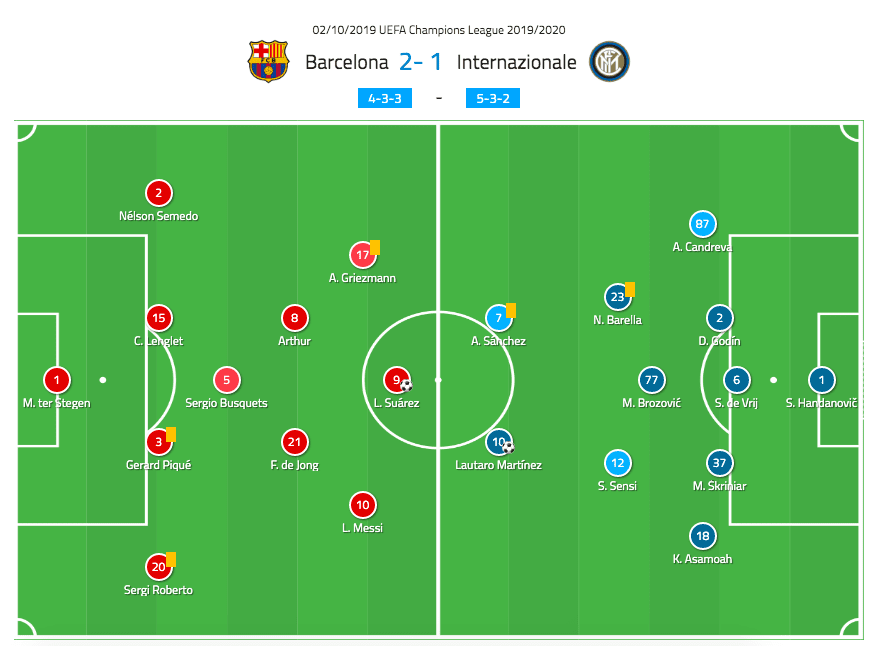
For the majority of the second half Valverde switched to a 4-2-3-1, where Antoine Griezmann and Lionel Messi dropped deeper, leaving Suarez to play by himself against three centre-backs. In doing so it allowed Griezmann and Messi the opportunity to get on the ball more frequently, whilst pulling Inter’s back five out of their deep block.
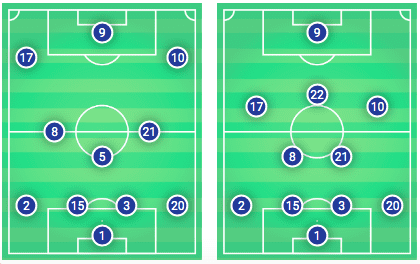
It proved to be a difference-maker with both of Barcelona’s goals coming in the second half.
How Barcelona’s front three impacted Inter’s defensive tactics
Barcelona dominated the ball as expected with 65% of possession. Inter naturally approached the game cautiously and had to soak up pressure whilst looking to capitalise on their chances when they came.
They sat deep and frustrated Barcelona. Going ahead in the second minute was perfect for Conte, whose side could continue with their game plan to defend and frustrate Barcelona, with a 1-0 lead to protect.
The analysis below shows how Inter set up from the word go to man-mark Barcelona’s central players whilst the three centre-backs protected the half-spaces with their tight shape, flanked by their defensive wing-backs. In doing so Conte looked to push Barcelona into wide areas and avoid having Messi and Griezmann operate in the half-spaces where they are so dangerous.
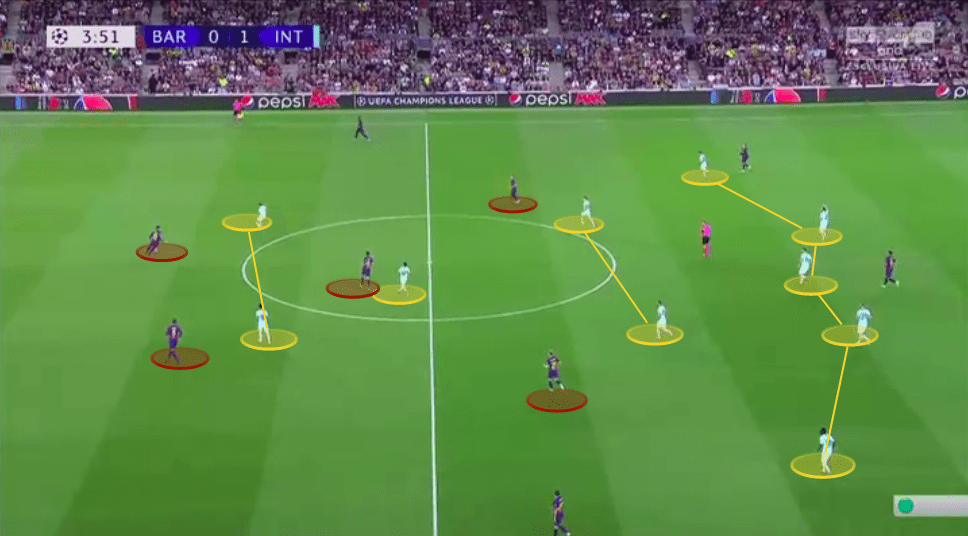
They were successful in doing this, and 42.4% of Barcelona’s passes on the evening were lateral. Their pass map highlights the use of the lateral pass with both Nélson Semedo and Sergi Roberto heavily involved in Barcelona’s passing game.
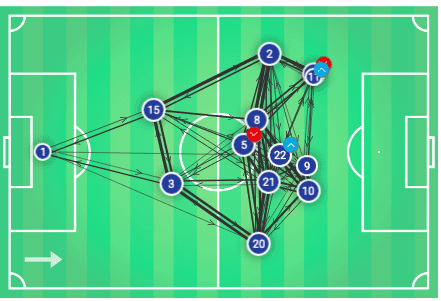
Inter used a low central block throughout the evening to prevent Barcelona from penetrating their 18-yard box, and were largely successful. Despite Barcelona having 16 shots, the majority of these came from outside the box from low-percentage areas. Inter only managed three shots on target from their 11 efforts but managed more shots from within the 18-yard box than the home side. This would explain why Inter’s xG of 1.61 exceeded Barcelona’s 1.3.
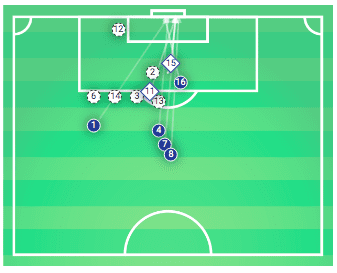
Inter’s 5-3-2 formation required Kwadwo Asamoah and Antonio Candreva to sit deep and make a back five alongside Milan Škriniar, Diego Godín and Stefan De Vrij. Inter are used to playing with two attacking wing-backs who are given autonomy over their entire flank and are used to work back defensively, whilst also provide the width in attack. However, in this game they were used more conservatively, and Asamoah, in particular, played very deep, to support his defence again Messi.
Candreva’s role for Inter
Candreva is naturally a midfielder and was given the license to push forward by Conte. By looking at Inter’s pass map we are able to see how high Candreva (87) pushed for the Italians, particularly in comparison to Asamoah (18).
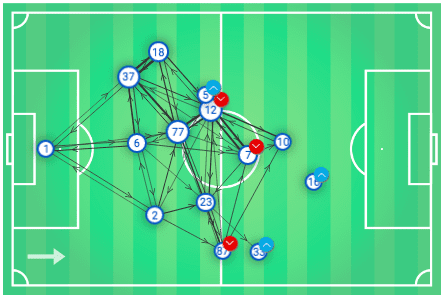
Barcelona typically played narrowly when Inter had possession and Candreva was used as an outlet to switch possession to, never coming in too close, but remaining close to the touchline on his wing.
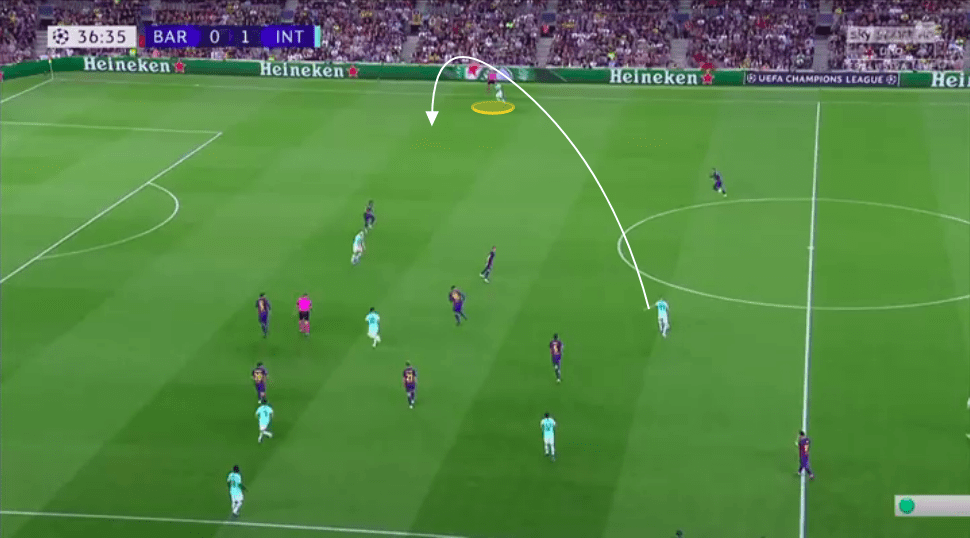
The wing-back’s pace was used as an outlet to help Inter counter, throughout the evening, and defensively he had a lot more joy playing against Griezmann than Asamoah did against Messi. Griezmann was restricted to one shot on target, one accurate cross, and zero dribbles. Candreva was useful going forward, completing two of his three crosses over the evening, and making attacking contributions to a right-side which Inter launched the majority of attacks from.
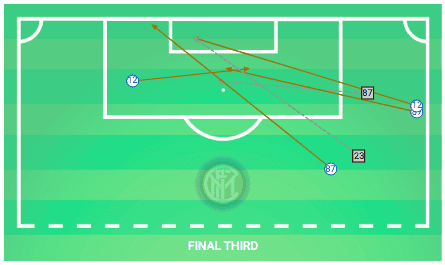
How Barcelona overcame Inter’s low defensive block
With Inter focusing so much on Messi it opened up opportunities down the left-flank for them as well. Semedo was vital to everything Barcelona looked to do throughout the game, mostly down to the space he was afforded on his left-side due to how congested Messi’s right-flank was.
Throughout the game, the left-back pushed high in order to give Barcelona the width they needed in attack. This width meant that Griezmann was able to push inside and attempt to operate in the half-spaces that he so often works in. However, as mentioned earlier, the Frenchman struggled to seize the game and much of Semedo’s attacking efforts were to no avail.
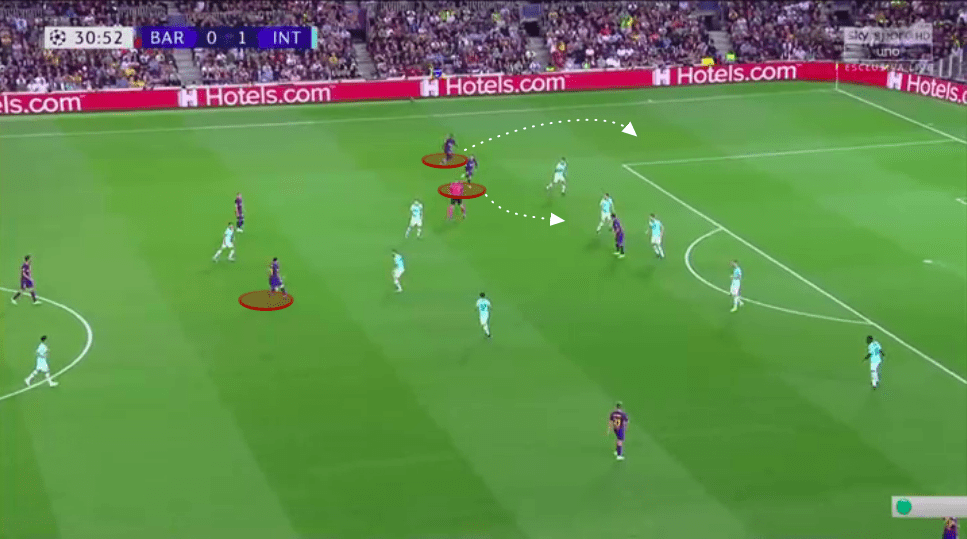
Over three times as many positional attacks came from the left-side as Inter overloaded defensively on Messi, meaning that Semedo’s role in their attacking exploits became increasingly important as the game progressed. Yet as we can see from the image below, for the number of attacks that came from the left-side there was only a 0.38 xG from 17 different positional attacks.
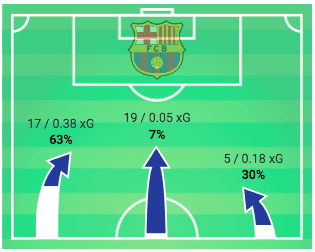
However, Messi’s influence as a ball-carrier shone through in the latter stages, and it was his brilliance that helped break down Inter’s defence. Although Inter did well to restrict Messi to just six successful dribbles from 13 attempts, four of these successful dribbles came in the final 15 minutes.
It was Inter’s intense focus on defending against the diminutive Argentinian forward that led to Suárez exploiting the space left by their efforts. Messi was able to draw the attention of numerous defenders when in possession, and his successful dribbles meant he was able to bypass defenders and play in teammates who were either open or in 1v1 situations. This was exactly what happened for the winning goal.
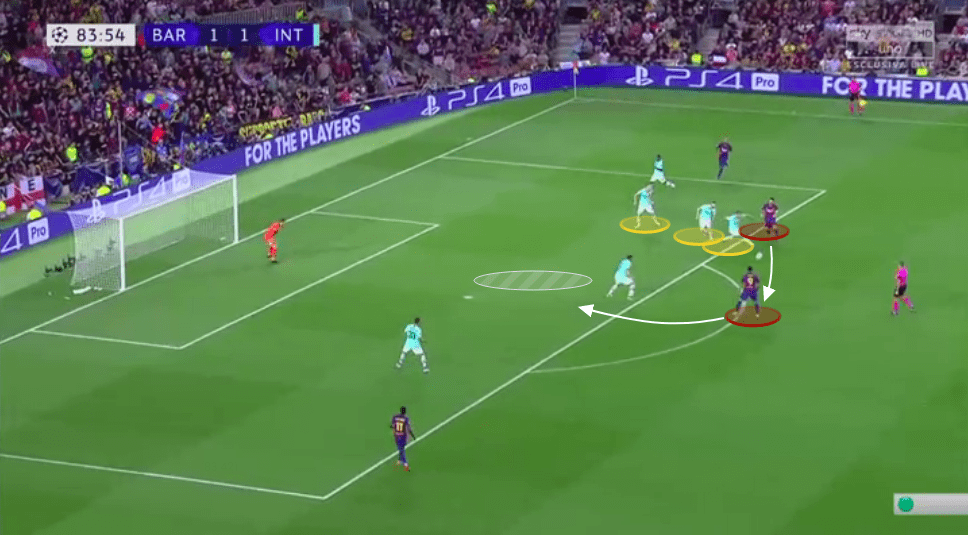
As Messi dribbled towards goal he brought three defenders towards him. Laying the ball into Suárez’s path, the Uruguayan striker was able to cleverly play the ball through to himself behind the Inter defence and score.
Conclusion
Inter will count themselves unlucky to be coming away from the Camp Nou with nothing to show for their valiant defensive effort. Throughout the game, they defended well in an attempt to prevent Barcelona from taking all three points. But for two moments of genius from both Suárez and Messi for both Barcelona goals, they would have done exactly what they had aimed to do.
Conte’s side adapted well to playing a more defensive formation than they are used to, however, it was the individual brilliance of two of Barcelona’s most esteemed players that meant Inter travelled back to Italy empty-handed.
Despite heavy periods of possession, Barcelona struggled to break down Inter’s sturdy defence and will know that the return fixture in Milan will be difficult. Despite their expensive summer editions of Griezmann and Frenkie De Jong, it was two of their veteran players that turned up on the night. Suárez has received a lot of criticism in recent months from the Barcelona faithful, but his stellar performance last night shows that he still has talent in abundance.

If you love tactical analysis, then you’ll love the digital magazines from totalfootballanalysis.com – a guaranteed 100+ pages of pure tactical analysis covering topics from the Premier League, Serie A, La Liga, Bundesliga and many, many more. Buy your copy of the September issue for just ₤4.99 here





Comments